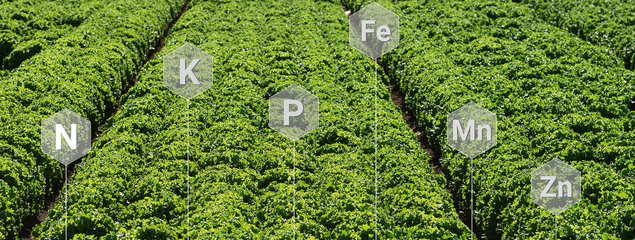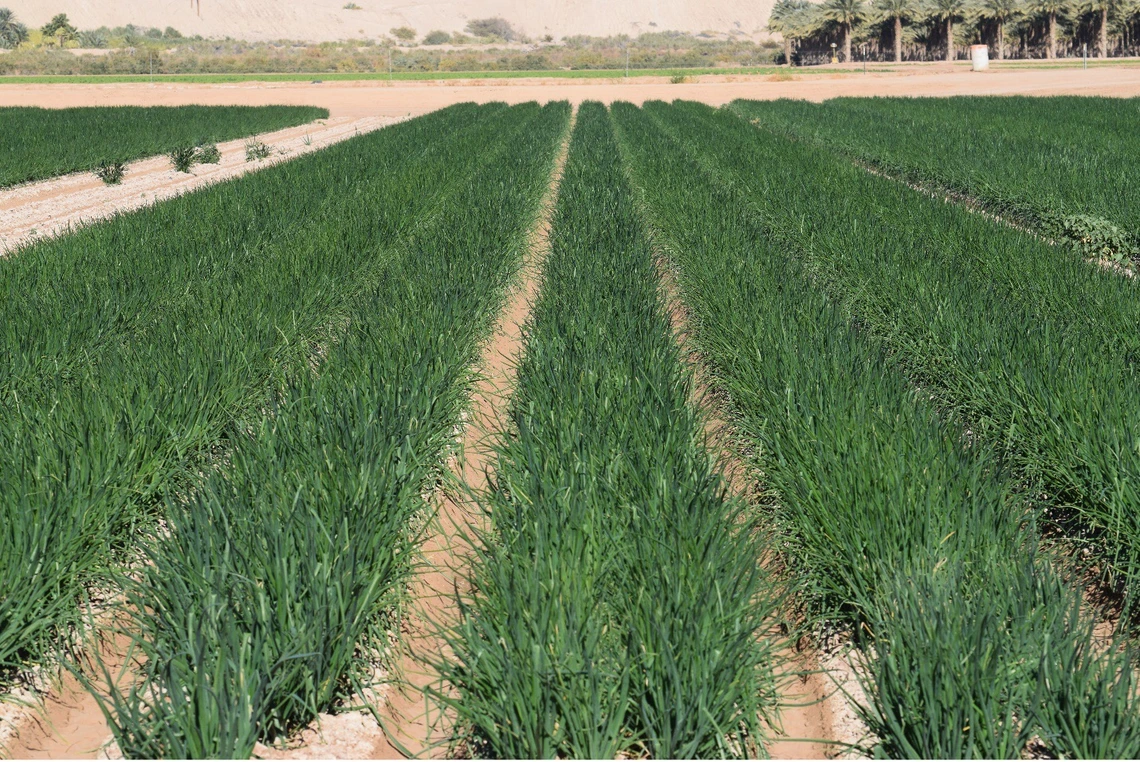
Improve Plant Nutrition
Fertilizer Guidelines for Vegetable Crops in Arizona
Crop Fertilizer Guidelines (3)
Onions (3.8)
Less than 2,000 acres of onions are produced in Arizona (Figure 3-8-1). In Arizona, onions are planted in the late fall and harvested in the late spring. Seasonal N accumulation by onions is approximately 200 lbs N/acre, and the amounts removed in the harvested bulbs is approximately 140 lbs N/acre (12, 13, 86). Depending on residual soil nitrate levels, onion yields are usually maximized at 225 lbs N/acre or less.
Pre-plant N applications should be based on a pre-plant nitrate-N test, and recommended rates will vary from 10-40 lbs/acre depending on soil test level and rates of monoammonium phosphate (MAP) applied as a pre-plant phosphorus (P) fertilizer (Section 2.1). The pre-plant N fertilizer can be broadcast applied in a blend with the pre-plant P fertilizer. Alternatively, early season N might be applied through sprinklers if used for stand establishment or season-long irrigation.
Most onions in Arizona are currently furrow irrigated, and most in-season N application is by side dress. The N rate to be applied should be based on a pre-side dress nitrate-N test. The required application rate depends on the difference between the minimum required threshold of 30 ppm and the measured soil test level. Approximately 4 lbs of N/acre need to be added to increase the soil test nitrate-N by 1 ppm. Fertigation in furrow water later in the season should only occur if soil nitrate-N levels fall below 20 ppm.
Based on recent studies in Central Arizona, onions have not responded to P fertilizers when Olsen P soil tests are greater than 15 ppm (Table 3-9-1). Onions are planted in the fall, and response to a starter fertilizer can occur for the latter fall planting as soil temperatures cool, even at Olsen P levels above 15 ppm.
Onion yield response to potassium (K) fertilization has not been observed in Arizona. However, it is prudent to occasionally run soil tests for K and verify that AA soil test K levels are greater than 100 ppm (Section 2.3), and conduct occasional tests of onion tops to verify that K concentrations are above 2.5% (Section 4.3).
As of the writing of these guidelines in 2025, a response of onion to Zn has not been observed by the author. However, because of the occasional response of other vegetable crops to Zn, periodic soil testing for Zn is recommended (Section 2.4). Tissue testing for Zn might also be informative where Zn levels in onion tops greater than 25 ppm indicate sufficiency (Section 4.3).

Figure 3-8-1
Onions near Yuma

Table 3-8-1
Onion P fertilizer guidelines by pre-plant Olsen P soil test.

